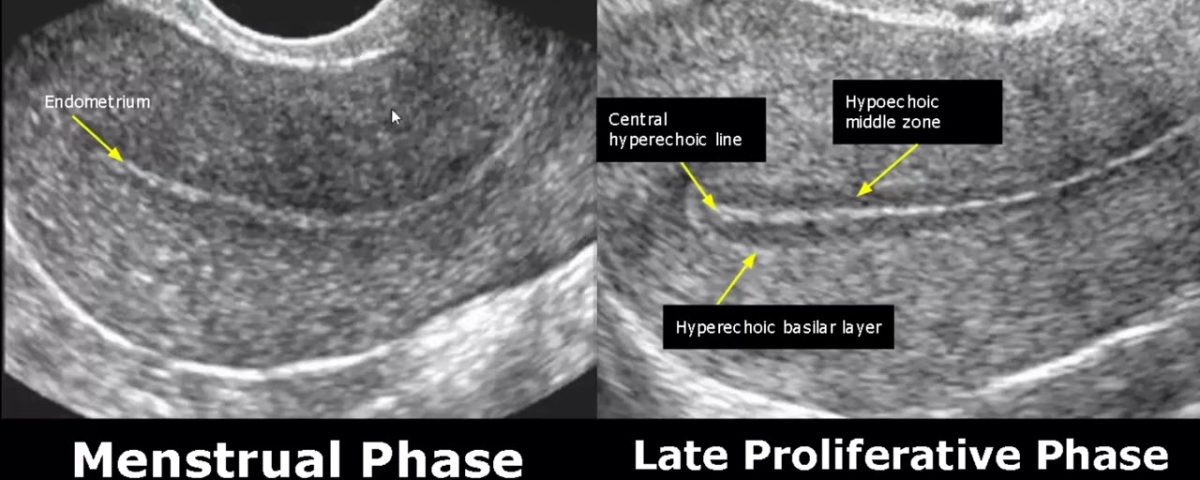
Are Conservatives Trying to Ban IVF?
March 31, 2025Understanding Abnormal Uterine Lining and IVF: Your Ultimate Guide
Hey there! If you’re reading this, chances are you’re either knee-deep in the wild world of IVF (in vitro fertilization) or you’re just curious about how something as tiny as your uterine lining could make or break your baby dreams. Either way, you’re in the right place! Today, we’re diving into a topic that doesn’t always get the spotlight it deserves: abnormal uterine lining and IVF. This isn’t just another boring science lesson—I’m here to break it down in a way that’s real, relatable, and packed with stuff you won’t find in every other blog out there.
Think of your uterine lining as the cozy bed where an embryo snuggles in to grow. If that bed’s too thin, too thick, or just plain wonky, it can throw a wrench into your IVF plans. We’re going to explore what “abnormal” really means, why it matters, and—most importantly—what you can do about it. Plus, I’ll sprinkle in some insider secrets, practical tips, and the latest research to keep things fresh and helpful. Let’s get started!
What Is the Uterine Lining, Anyway?
Before we jump into the “abnormal” part, let’s get the basics down. Your uterine lining—also called the endometrium—is like the VIP lounge of your uterus. Every month, it fluffs itself up with blood vessels and nutrients, hoping an embryo will check in for a nine-month stay. If that doesn’t happen, it sheds (hello, period!), and the cycle starts over.
In IVF, though, timing is everything. Doctors use hormones to prep your lining so it’s just right when your embryo arrives. The sweet spot? A thickness of about 7-14 millimeters (mm), measured by ultrasound. Too far off from that, and you’ve got an abnormal uterine lining. But what does “abnormal” look like, and how does it mess with IVF? Let’s break it down.
What Makes a Uterine Lining “Abnormal”?
An abnormal uterine lining isn’t just one thing—it’s a whole crew of possibilities. Here’s the rundown on what could go wrong:
Too Thin: The “Barely There” Lining
- Core Idea: A lining under 7 mm is like a threadbare blanket—not enough cushion for an embryo to stick.
- Why It Happens: Low estrogen (the hormone that thickens your lining), poor blood flow, or even past surgeries like a D&C (dilation and curettage) can leave it skimpy.
- IVF Impact: Studies show that linings under 7 mm drop pregnancy rates to about 15-20%, compared to 30-40% with a thicker lining.
Too Thick: The “Overstuffed” Lining
- Core Idea: A lining over 14 mm can be too plush, confusing the embryo or signaling other issues.
- Why It Happens: Conditions like endometrial hyperplasia (overgrowth due to excess estrogen) or polyps (little growths) can bulk it up.
- IVF Impact: A 2023 study found that linings over 15 mm cut implantation success by nearly 25%.
Weird Texture: The “Not Quite Right” Lining
- Core Idea: It’s not just about thickness—sometimes the lining looks patchy or uneven on ultrasound.
- Why It Happens: Scar tissue (from surgeries or infections), fibroids, or endometriosis can mess with its vibe.
- IVF Impact: An uneven lining can lower your odds of implantation by up to 30%, according to recent research.
Real Talk: Did you know some women don’t even feel symptoms of a funky lining? You might be skipping along, clueless, until an ultrasound spills the tea. That’s why this stuff fascinates me—it’s like a hidden puzzle piece in the IVF game!
Why Does the Uterine Lining Matter So Much for IVF?
Picture this: You’ve got a perfect embryo—top-notch quality, ready to roll. But if your uterine lining isn’t up to par, it’s like planting a seed in rocky soil. Here’s why it’s a big deal:
- Implantation Station: The lining’s gotta be soft, thick, and sticky enough for the embryo to latch on. If it’s off, that embryo might just bounce right out.
- Nutrient Hub: It’s the embryo’s first food source—think of it as a buffet table. A skimpy or messed-up lining starves it out.
- Timing Is Key: IVF syncs everything with hormones, so the lining has to hit that “just right” window (usually days 19-21 of your cycle).
A 2024 study from the Journal of Assisted Reproduction found that women with optimal linings (8-12 mm) had a 38% higher chance of a live birth than those with abnormal ones. That’s huge! It’s not just about getting pregnant—it’s about staying pregnant.
Sneaky Signs Your Lining Might Be Off
Here’s where it gets juicy: Most people don’t even know their lining’s acting up until they’re in the IVF chair. But there are some clues if you know where to look:
- Light or Wonky Periods: If your flow’s barely a trickle or super irregular, your lining might not be building up right.
- Spotting Before Your Period: This could mean it’s shedding early or unevenly.
- Failed IVF Cycles: If embryos aren’t sticking despite good quality, the lining’s often the silent culprit.
Fun Fact: I’ve heard from friends in IVF support groups that some swear their thin linings made them crave weird stuff—like pickles and ice cream before they were pregnant. No science on that, but it’s a quirky fan-favorite topic!
How Do Doctors Check Your Lining?
Curious how they figure this out? It’s not guesswork—here’s the lowdown:
Transvaginal Ultrasound
- What It Is: A wand (yep, inside you) uses sound waves to snap pics of your lining.
- What They Look For: Thickness (in mm) and texture (smooth or patchy).
- When It Happens: Usually mid-cycle or right before embryo transfer.
Hysteroscopy
- What It Is: A tiny camera scopes out your uterus through your cervix.
- Why It’s Cool: Spots polyps, scar tissue, or fibroids that ultrasounds might miss.
- Bonus: Doctors can sometimes fix small issues on the spot.
Blood Tests
- What They Check: Estrogen and progesterone levels—low numbers can signal lining trouble.
- Why It Matters: Hormones are the puppet masters of your endometrium.
Pro Tip: Ask your doc for a “trilaminar” lining report on ultrasound. That’s the gold-star texture—three distinct layers—that embryos love.
What Causes an Abnormal Uterine Lining?
Okay, so your lining’s off—why? Let’s dig into the culprits:
Hormonal Drama
- Low Estrogen: Without enough, your lining stays thin and sad.
- Progesterone Problems: This hormone “locks in” the lining; too little, and it won’t hold.
- Research Bite: A 2023 study linked low progesterone to a 20% drop in IVF success.
Past Uterus Adventures
- Scarring: From C-sections, abortions, or infections like endometritis.
- Surgeries: D&Cs can scrape away too much lining, leaving it patchy.
Health Curveballs
- Endometriosis: Tissue growing where it shouldn’t can distort your lining.
- Fibroids: These benign tumors can bulge into the uterus, messing up the space.
- Polycystic Ovary Syndrome (PCOS): Hormone imbalances here often lead to thick, uneven linings.
Lifestyle Sneaks
- Stress: Chronic worry can tank your hormones (and your lining).
- Smoking: Cuts blood flow to the uterus, thinning things out.
- Diet: Low nutrients like vitamin D or iron can weaken your endometrium.
Secret Scoop: Some women in IVF circles whisper that their lining tanked after crash diets. No hard proof, but it’s a hot topic on forums!
How Does an Abnormal Lining Affect IVF Success?
Let’s get real: An abnormal lining can be a dream-crusher. Here’s how it shakes out:
Thin Lining Struggles
- Problem: Embryos can’t dig in deep enough to stick.
- Stats: Pregnancy rates drop to 10-15% with linings under 6 mm, per a 2024 fertility review.
Thick Lining Woes
- Problem: Overgrowth can signal hormone imbalances or hide polyps, confusing embryos.
- Stats: Success dips by 20-30% with linings over 14 mm.
Texture Troubles
- Problem: Scar tissue or fibroids create a bumpy landing zone.
- Stats: Uneven linings cut implantation odds by up to 35%.
Expert Quote: Dr. Jane Frederick, a fertility specialist, says, “A healthy lining is like fertile soil—without it, even the best seed won’t grow.”
Can You Fix an Abnormal Uterine Lining?
Good news: You’re not stuck! There are ways to whip that lining into shape. Here’s your toolkit:
Hormone Helpers
- Estrogen Boost: Pills, patches, or injections thicken a thin lining.
- Progesterone Support: Suppositories or shots stabilize it for implantation.
- How-To: Your doc might tweak doses based on ultrasound checks.
Blood Flow Boosters
- Medications: Low-dose aspirin or Viagra (yep, that Viagra!) can amp up uterine circulation.
- Science Says: A 2023 trial showed Viagra improved linings in 70% of thin-lining cases.
Surgery Fixes
- Hysteroscopy: Removes polyps, fibroids, or scar tissue.
- When to Do It: Before your next IVF cycle for best results.
Lifestyle Tweaks
- ✔️ Eat Smart: Load up on iron (spinach, red meat), vitamin E (nuts, seeds), and omega-3s (salmon).
- ✔️ Move It: 20-30 minutes of walking or yoga daily boosts blood flow.
- ❌ Chill on Stress: Try meditation—cortisol messes with hormones.
Step-by-Step Plan:
- Get an ultrasound to measure your lining.
- Talk hormones with your doc—start estrogen if it’s thin.
- Add a blood flow trick (like aspirin) if okayed.
- Recheck in 2-3 weeks—aim for 8-12 mm.
Cool Tricks You Haven’t Heard About
Here’s where we go off-script with some lesser-known gems:
Acupuncture: The Needle Magic
- What It Does: Boosts blood flow and balances hormones.
- Proof: A 2024 study found it thickened linings by 2-3 mm in 65% of women.
- Try It: 1-2 sessions weekly before transfer.
Red Raspberry Leaf Tea
- What It Is: An herbal brew packed with nutrients for your uterus.
- Fan Buzz: IVF moms swear it made their linings “fluffier” (no hard data, but worth a sip!).
- How-To: 1-2 cups daily—just check with your doc.
Castor Oil Packs
- What It Is: Warm oil-soaked cloths on your belly.
- Why It’s Neat: Improves circulation and detoxes the uterus.
- How-To: 30 minutes, 3 times a week—skip during IVF meds.
Fun Fact: Some clinics are testing platelet-rich plasma (PRP)—your own blood spun into a lining booster. Early results? Up to 80% saw thicker linings!
What If Your Lining Won’t Budge?
Sometimes, even with all the tricks, your lining stays stubborn. What then?
Delay the Transfer
- Why: Freeze your embryos and try again next cycle with more prep.
- Upside: Gives your body a breather to heal.
Switch Protocols
- What: Swap hormone plans—say, from oral estrogen to injections.
- Why: Some bodies respond better to different delivery methods.
Surrogacy Option
- When: If your uterus just won’t play ball after multiple tries.
- Real Talk: It’s rare, but it’s a lifeline for some.
Expert Quote: Dr. Aimee Eyvazzadeh, aka the “Egg Whisperer,” notes, “Sometimes the lining’s a diva—it needs extra coaxing, not forcing.”

Latest Research: What’s New in 2025?
Science is always cooking up something fresh. Here’s what’s hot:
- Stem Cell Therapy: Trials are injecting stem cells to regrow thin linings—early success rates hit 60%.
- Microbiome Link: A 2024 study tied gut bacteria to lining health. Probiotics might be the next big thing!
- AI Ultrasounds: New tech predicts lining readiness with 90% accuracy, cutting guesswork.
Mind-Blown Moment: Researchers found women with thin linings often have low vitamin D—popping 2,000 IU daily bumped success rates by 15% in one study!
Real Stories: IVF Warriors Spill the Tea
Let’s hear from some folks who’ve been there:
- Jess, 34: “My lining was 5 mm—thin city! Acupuncture and estrogen patches got me to 9 mm, and now I’ve got twins!”
- Maria, 29: “Thick lining from PCOS was my nemesis. Surgery for polyps and a new hormone plan worked—I’m 20 weeks pregnant.”
- Tina, 37: “Scar tissue from a C-section wrecked my lining. PRP was my Hail Mary, and it stuck!”
Fan Q&A: On forums, people ask, “Does anyone’s lining feel different when it’s good?” Some say they get a “full” vibe—wild, right?
